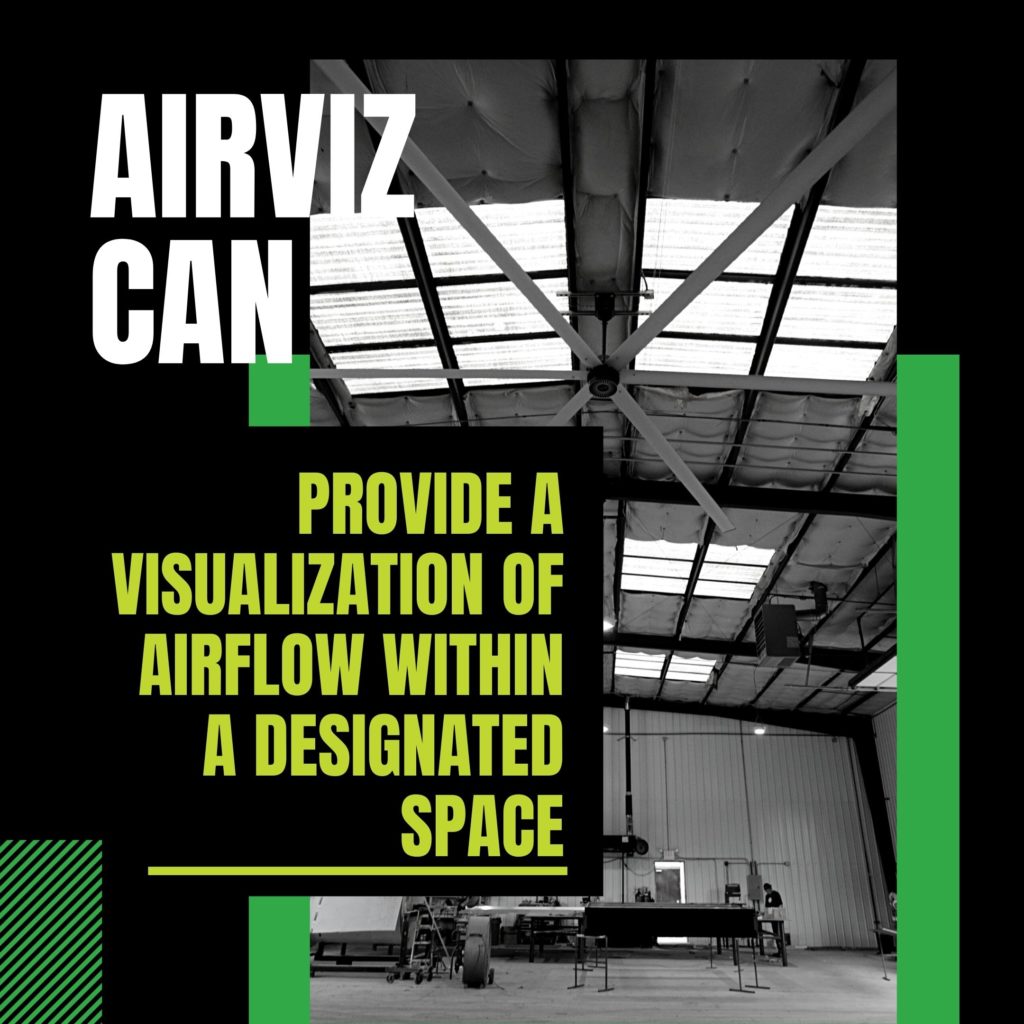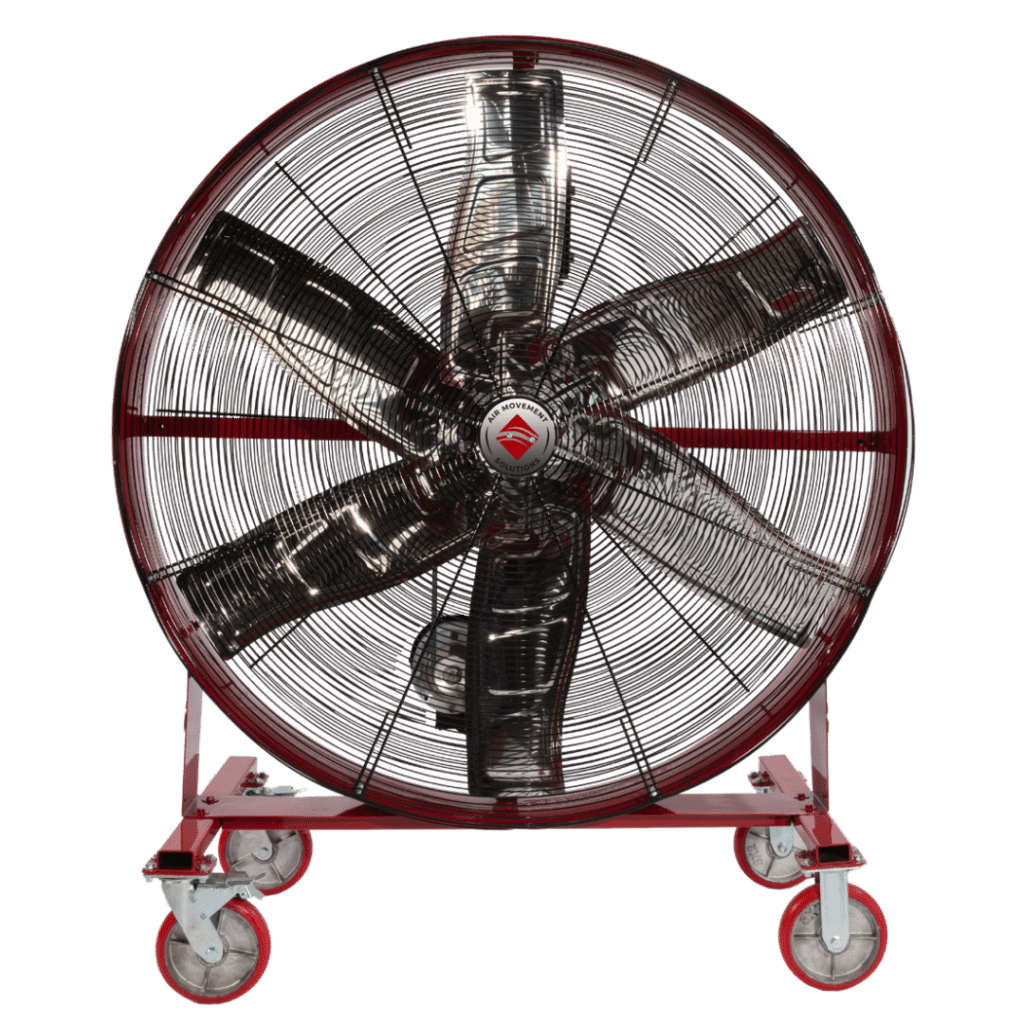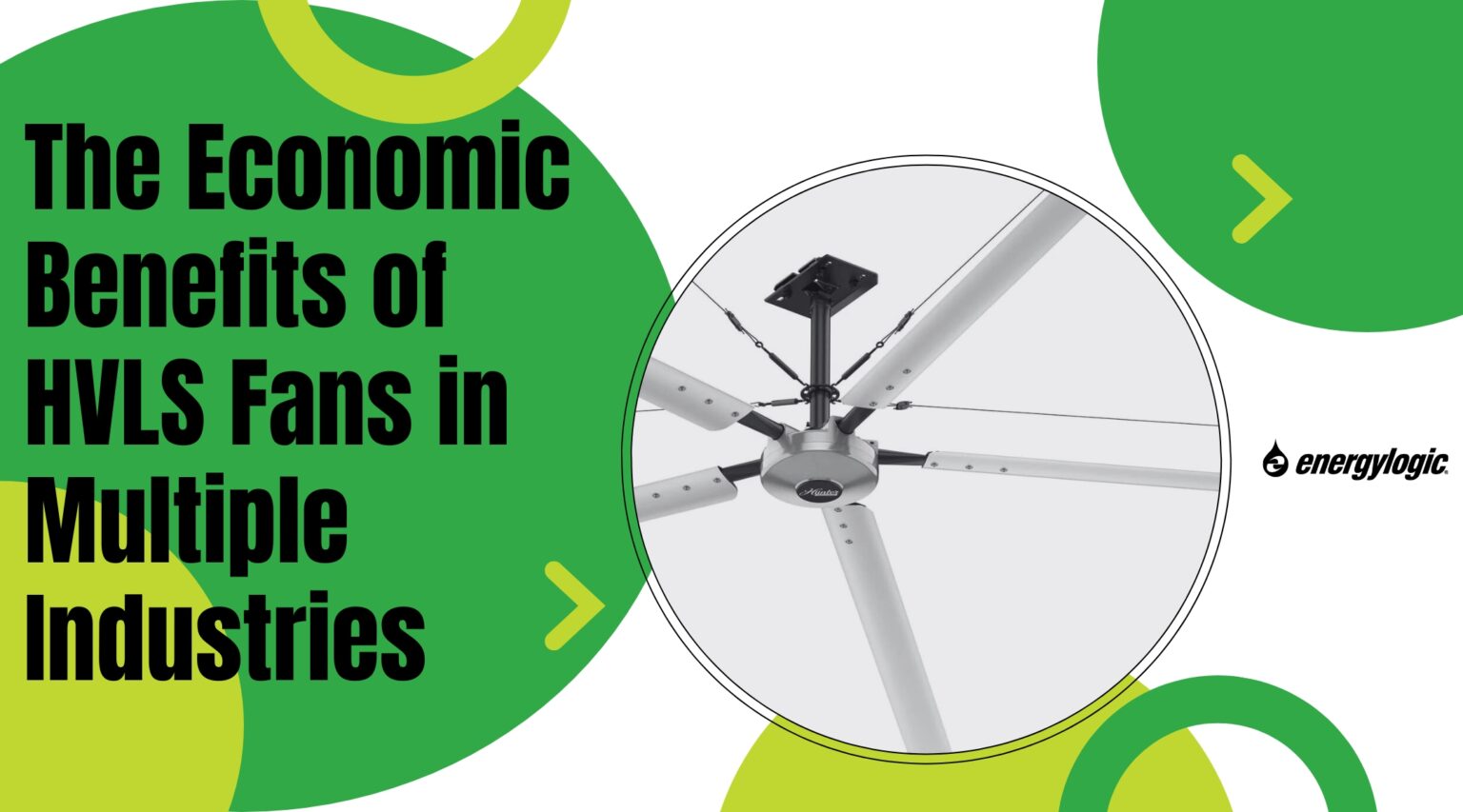
Since their invention in 1998, the efficiency of HVLS fans has been well known to all who experience them. However, for someone who has never stood under one of these massive fans and felt the cool air cascade down on them or stood away from the fan and felt the cooling horizontal jet from head to toe, it is difficult to understand how well the fans work. That’s why the research and development team of our HVLS partners created AirViz.
The Tool
AirViz is a simulation tool that allows customers, contractors, engineers and architects to understand the performance of our HVLS fans. Using computational fluid dynamics to determine the average airspeed in an occupied space, the flow simulation tool provides a visualization of the airflow from our fans.
The Science
Contrary to popular belief, fluid is not just a liquid. It is anything that flows, including gases, like air. Computational fluid dynamics (CFD) then can simulate the flow of any fluid. CFD takes the space where the flow is to be simulated and divides it into a grid. It then solves the complicated equations that govern fluid flow, known as the Navier-Stokes equations, for each cell in the grid. There are often thousands or millions of cells in a simulation. Depending on the number of cells and the complicated nature of the equations, a CFD simulation can take hours or days for a powerful desktop computer to solve. The AirViz application simplifies this process.

The Software
There are many CFD software packages on the market.The one we use for AirViz is called SolidWorks Flow Simulation, which is an add-on to the SolidWorks tool. With this software package, we can model the building, place the fans in appropriate locations and add specific parameters. After the simulation is complete, we post-process the data, making it easier to understand by getting various images and videos of the airflow and average airspeed in the occupied space.

The various software packages that use CFD are very powerful and accurate, but they do have limits. The first and foremost limitation is computational power. Only within the last ten years have desktop computers been able to handle complicated flow simulations. Even today, flows with geometries that move or rotate, like a fan, take days or even weeks to solve. Perhaps this is why no other HVLS manufacturer, to the best of our knowledge, has completed this type of offering before. Also, with a CFD solution, one cannot expect perfect accuracy. Since approximations are used for things like turbulent flow, simulated velocities at a particular point can only be expected to be within about +/-30 percent of their actual value. However, for a larger space, the averaged accuracies reduce down to a much more respectable +/- two percent.




